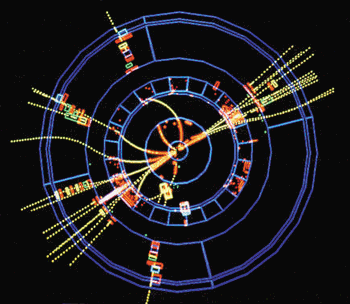The ultimate goal of particle physics is, in a nutshell, to find a theory of everything. As goals go it is ambitious in the extreme, although the unification of the four fundamental forces of nature will not signal the end of physics as we know it. Crucial to reaching this goal will be a succession of accelerators that will collide subatomic particles at ever-higher energies and will cost ever-larger sums of money. As the four forces become three, then two and finally one, a similar fate might apply to the world's accelerator laboratories.

Currently there are, at most, five centres operating in the front line of particle physics: CERN and DESY in Europe, Fermilab and Stanford in the US, and KEK in Japan. How many of these laboratories are still with us in a decade or two from now remains to be seen.
The year 2020 might seem a long way away, but that is the timescale that the international particle-physics community is currently contemplating. Indeed, around 1000 American particle physicists gathered at Snowmass in Colorado last month to help map out a 20-year strategy for the future of their subject, and the European Committee for Future Accelerators (ECFA) is also about to report on the future of high-energy physics in Europe.
The next 10 years are already mapped out in broad strokes. The upgraded Tevatron at Fermilab will work at the energy frontier, where it hopes, among other tasks, to confirm the existence of the Higgs bosons, while the B-factories at Stanford and KEK will probe the difference between matter and antimatter in greater detail (see page 11, print version only). At the same time a range of less expensive neutrino and particle astrophysics experiments will tackle questions related to dark matter and other stuff not predicted by the Standard Model of particle physics. Around 2006 the Large Hadron Collider at CERN will take over from the Tevatron at the energy frontier and is likely to operate for a decade.
As part of its plans for the future, the US community is keen ensure that the next really big experiment – a linear accelerator that would collide electrons and positrons at energies of 500 GeV (5 x 1011 electron volts) or higher – is built on American soil. Fermilab has surprisingly emerged at the US’s preferred site for the linear collider, even though it has never played a prominent role in any of the R&D programmes for such a machine. And Stanford has thrown its weight behind Fermilab, much to the chagrin of KEK director Hirotaka Sugawara who is keen for the collider to be built somewhere in the Asia Pacific region – that is somewhere in Japan or California (see page 10, print version only).
Japan is keen to host an international research facility, and its two main targets are the linear collider, which has a price tag of $6bn, and a fusion-energy reactor known as the International Thermonuclear Experimental Reactor (ITER), which is likely to be even more expensive. Japan faces competition from Fermilab and DESY for the first of the projects, and from Canada and France for the second. It cannot afford both.
All agree that the linear collider must be international in a way that no project has ever been before. As Jonathan Dorfan, director of the Stanford Linear Accelerator Center (SLAC), puts it: “[This] is forced on us by the richness of our science and by cost of our science.”
In particular, both the accelerator and the detector must be truly international – in the past the accelerator has usually been built by the host lab, while multinational collaborations have built the detectors. It is also essential that the host country must not benefit unduly from the project. In other words, the host must bear much more of the costs than the other partners. If these two criteria are met, then it does not really matter where the linear collider is built, as long as the best possible machine is built somewhere in the world.



